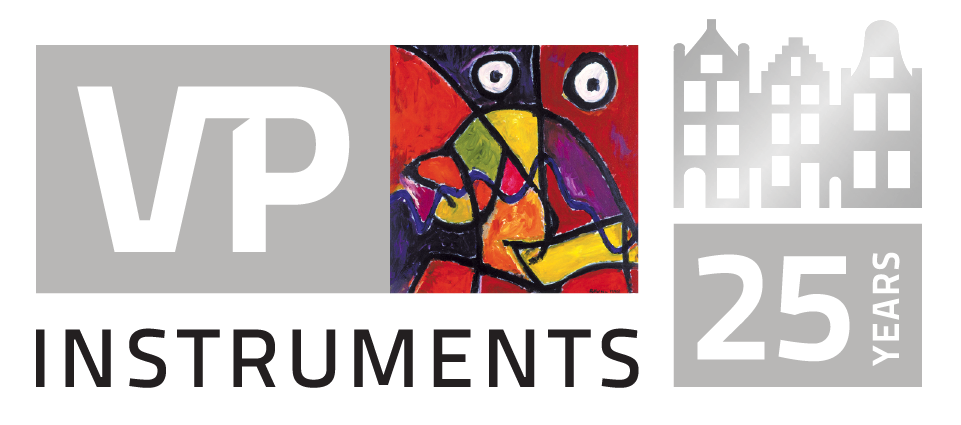‘Measuring is knowing’ is admittedly a cliché, Pascal van Putten acknowledges, but in terms of content it is still extremely topical. “Nowadays there is no more room on the electricity grid for many manufacturing companies. It is therefore important to work collectively on energy savings. We must do everything we can to ensure that companies can continue to grow in the future. I know examples of production companies that have hit a wall in this regard.” He is director/founder of Delft-based VPInstruments, which offers flow measurement systems for compressed air and industrial gases. The company develops and assembles in Delft and exports to approximately seventy countries worldwide.
Personal advice
Need help with compressed air leaks in your system? Our experts are happy to help!
Leave your contact details here if you want to receive tailored advice. One of our experts will get in touch with you.
Speed up production
The companies that are customers of VPInstruments can be found in various sectors, such as the food, glass, steel, automotive, high-tech, electronics and chemical sectors. “Every manufacturing company has a compressed air component. Think of controlling valves on the assembly line, machines that make packaging or blowing granules in light chemicals.” At a chocolate factory, targeted energy management could achieve annual savings of 125,000 euros. Van Putten: “There was a lot of leakage there. During breaks the machines were on standby, but the consumption was still fifty percent compared to nominal. We were able to trace where it leaked.

VPVision is the complete real-time energy monitoring solution for all utilities within your company. With the VPVision software, you can see the true costs of all utilities; take factual and well-founded decisions on your costs and investments.
You can also walk through the factory with a leak gun – that’s nice but expensive stuff – but it takes a lot of time if you have to do this in several buildings. In the chocolate factory it also turned out that the cycle of a machine had become slow. Now the pneumatic press opens and closes faster again, resulting in higher production and fewer malfunctions. The latter has a positive effect on the atmosphere in the workplace.”
Less is more
“Companies can also fine-tune the efficiency of compressed air systems by combining the right types of compressors. This can make a difference of tens of percent,” Van Putten continues. The payback period for the investment in one or more flow sensors is generally less than a year, he says. “’Less is more’ is the trick with sensors. We use the art of omission and are not in favor of filling a factory with sensors.

We work top-down: first we do the main line and then we roll it out like a pyramid. That is by far the smartest and most effective approach.” For industrial gases, the payback time of a flow sensor is even shorter. While compressed air costs a few cents per cubic meter, gases such as argon, nitrogen or oxygen cost a few euros per cubic meter.
“For example, welding uses argon and CO2. Hoses connected to the welding torch often leak. You can’t smell that, and I know a factory in the United States where the leaks were in the barrels. We are helping more and more companies with managing these industrial gases.”
Originated from a family invention
Pascal van Putten founded VPInstruments 24 years ago. His father was a professor at TU Delft and had already invented a thermal flow sensor in the 1970s. “He was the first in the world to get a flow sensor in a chip,” says Van Putten. His father refined the concept further in the decades that followed, without paying much attention to its marketing. “My father’s passion was how to translate the physical world into the electronic world. At some point – I was finishing my mechanical engineering studies – a prototype was developed that was very interesting. The flow sensor was standardized, had a high measuring range and high accuracy. A lot came together at that moment: we received a subsidy from Technostart – the predecessor of YESDelft! – and office space. At the time, I had no children, no mortgage and nothing to lose and therefore decided to found VPInstruments together with my brother.” He is now the only family member still involved in the company. 25 people now work there.
Cheap battery
Van Putten has an interesting idea for factories with high peak consumption. “If such companies invest in compressed air storage, you could run the same production with smaller compressors. This relieves the burden on the local electricity grid, and you do a service not only to yourself but also to your neighbor. There are parties – including a start-up in the Netherlands that is active in this field – that store compressed air in salt domes underground. That is a relatively cheap battery. But it can also be smaller with local storage tanks in your own compressed air system: suppose that as a producer in Rotterdam you do not need compressed air all the time or you want to purchase the electricity for your compressed air cheaply. Then you run the compressor when the electricity price is low. With the help of your storage tank, you can manage the peak load better.” Investment in storage tanks is not expensive, he says. “You have to realize that you add water when you compress air. You have to dry that away, which costs energy. Otherwise, your tank will fill up with water. It can be interesting to have ideas like these calculated by a consultancy firm.”
By Europoort Kringen Editorial – Industrieel Management Magazine
